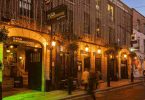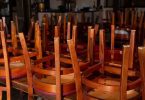Sweet delights
Ask an off-licence owner about dessert wines and the answer is certain; gorgeous but you can’t sell them. Yet there’s nothing that rounds off a meal so well, especially over Christmas and the party season. So how can a wine store persuade those bottles to move?
First consideration is a special dessert wine display. Many dessert wines have interesting looking bottles which can be used to eye-catching effect, along with cards suggesting food matches and serving occasions. A colourful dessert wine list on the counter can also help to get attention. As so many bottles are sold in 375cl and 50cl format, the outlay per purchase isn’t too painful, and attention can be drawn to that.
A small tasting is worth thinking about, targeting busier times such as Saturday mornings. Just two or three wines can be enough to generate interest and as sweet wines keep well for a while after opening, a tasting could be run over a couple of days. If you can spare some staff time to do a bit of hand selling, that can also pay dividends.
Many consumers write off these wines as too sugary for their taste, often without actually sampling them. It’s worth persuading them to taste and explaining how high levels of acidity in many of these wines balance the sweet flavours. You can also offer a little information on production methods; customer interest can be aroused when it’s realised that these are small batch, traditional wines, often made in ways which are virtually artisanal.
Few producer countries do much to promote these wines, with only Australia making a real effort to popularise the style, although Germany has been putting more weight behind them lately. Spanish marketing is largely focused on sherry, while the Italians seem quite content to drink most of their best sweet stuff themselves. Specific promotion of France’s Sauternes is virtually non-existent and it’s no accident that quantities of some wonderful recent vintages are still in warehouses, so don’t be afraid to ask suppliers for some good value in this category.
Most of the last 10 years have been very good, with only 2004 and 2002 less than excellent. Top bets are 2001, 2005, and 2007 looks promising, with Barsac commune seeming to have the best of it.
Here are some sweets recently tasted with prices approximately retail, and bottles generally 375 cl.
Deen de Bortoli Vat 5 Botrytis Riverina Semillon 2006. (Febvre €12.99). Great value. Distinctly Sauternes-like, with mouth filling, unctuous fruit and honey flavours, fine balancing acidity and decent length. Recommended.
Peter Lehmann Botrytis Barossa Semillon 2007 (Comans €10.95). A little leaner than the above, with lovely minerally elements and beautifully judged acidity.
Mount Horrocks Cordon Cut Clare Valley Riesling 2008 (Liberty €25). Splendid Christmas gift wine, with deliciously fresh apricot and pineapple flavours and fine acidity and length. Fans of sweet Loire valley chenin would love this.
De Bortoli Noble One Semillon 2005 (Febvre €35). Out of several vintages available, this is my current favourite for weight, length and acidity. Delicious honey and marmalade fruit; it’s expensive but a good gift wine.
Oremus Furmint Late Harvest 2006 (Searsons €19). From a Tokaji house, this Hungarian wine, with flavours of honey, orange and creamy nuts, is very good value.
Donnafugata Ben Rye Moscato di Pantelleria DOC 2006 (Liberty €50). One of the great legendary dessert wines of Italy, from an island off the coast of Sicily. Hugely dense lemon and marmalade flavours with notes of dried fruit and nuts. Memorable gift wine, which is terrific with sweets, foie gras, rich pâtés, and ricotta based dishes.
Chateau Gavas Sauternes 2006/7 (Findlater €20). A Sauternes house which delivers consistently and at reasonable cost. While 2006 is very good, with lots of floral fruit, honey and the faintest of spices, 2007, which I haven’t tasted yet, is rumoured to have the edge. Sound Christmas choice.
Chateau de Navailles Jurancon 2004 (Searsons €20). Characterful, mid-weight moelleux from south-west France, which works with foie gras, blue cheeses, and spicy fruit pies. Good value – and you get a whole bottle this time!
Innocent Bystander Pink Moscato Swan Hill Australia 2009 (Liberty €6.99). How about a sweet sparkler, which is beguilingly pink and has very low alcohol? And is perfect with ice-cream, meringues and fruit based desserts? Then try this lively stuff, full of soft summer fruits freshened with nicely balancing acidity. Good aperitif, too.








